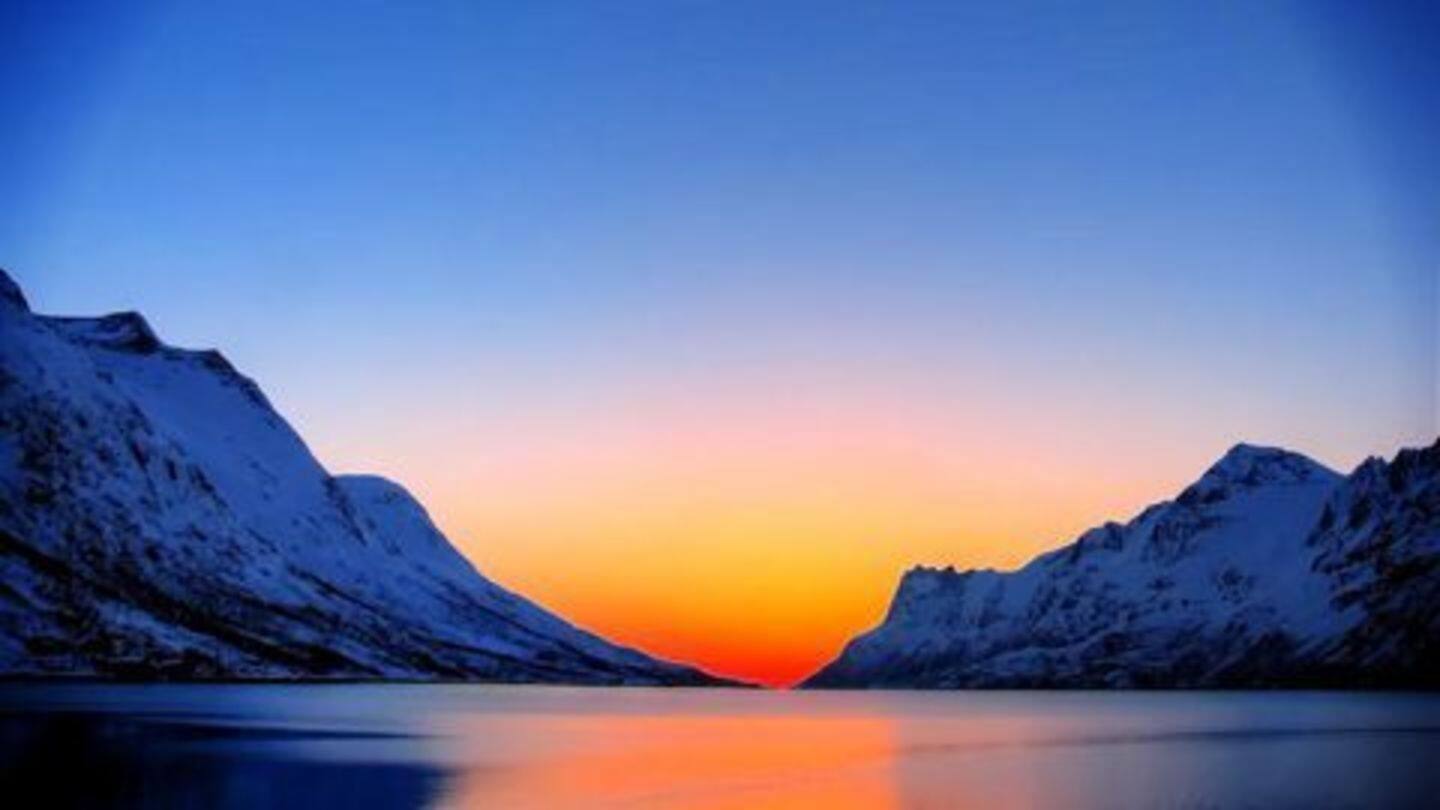
Climate Emergency: North Pole witnesses record rise in temperatures
What's the story
The North Pole has reportedly been recording alarming temperatures at least 20°C (36°F) above average. The Arctic is also witnessing a record low extent of sea ice for October. Whereas it's 'polar night' in the Arctic at present - the sun doesn't rise in much of the region. It is supposed to be super-cold now as night lasts for over 24 hours.
Information
The Arctic is super-hot
When it's polar night, the sea ice covering the vast Arctic Ocean is supposed to thicken. But the region is witnessing record low levels of sea ice. The Arctic is reportedly super-hot, even as a huge area of cold polar air was displaced over Siberia.
Sea Ice
This year's October the third warmest month
October is the first month when the ice over the Arctic is supposed to grow. However, the area of ice is 28.5% less than the 1981-2010 average. The National Oceanic and Atmospheric Administration (NOAA) declared this year's October the third warmest ever behind 2014 and 2015. NOAA Climate Scientist Jessica Blunden stated the Arctic is the "canary in the coal mine" for global warming.
The NOAA
Meteoric rise in October temperatures on Alaska's north slope
According to NOAA meteorologists, the Arctic has been "unusually warm" for a very long time now. Some parts of Greenland, including the top ice sheet of Greenland, were more than 7°C warmer than last month's average. NOAA's Climate Science and Services Manager in Alaska, Rick Thoman said there had been a "meteoric rise in October temperatures on Alaska's north slope."
Quote
Warm advection into the Arctic
Arctic expert, James Overland with the National Oceanic and Atmospheric Administration, stated, "There is strong warm advection into the Arctic, especially northern-central Canada, in through the Atlantic, and east Siberian/Chukchi Sea."
Critical State
The critical state of the Arctic
One of the other key indicators of the critical state of the Arctic is that the extent of sea ice over the Arctic Ocean is low, less than its record 2012 low. However, the sea ice is freezing up but not as rapidly as it usually had been. During this time of the year, the ice freezes up after reaching its low in September.
Warm Levels
Abnormally warm air flooding the Arctic since October
This is the second consecutive year the temperatures near the North Pole have reached record high levels. Towards the end of 2015, the temperatures near the Pole rose to the melting-point due to a massive storm, which pumped warm air into the area. Richard James, a meteorologist, found the Arctic Ocean's average temperature was over 2° C more than the 1998 record high level.
Quote
The Arctic warmth
Rutgers University's Arctic Specialist Jennifer Francis stated: "The Arctic warmth is the result of a combination of record-low sea-ice extent for this time of year, probably very thin ice, and plenty of warm/moist air from lower latitudes being driven northward by a very wavy jet-stream."